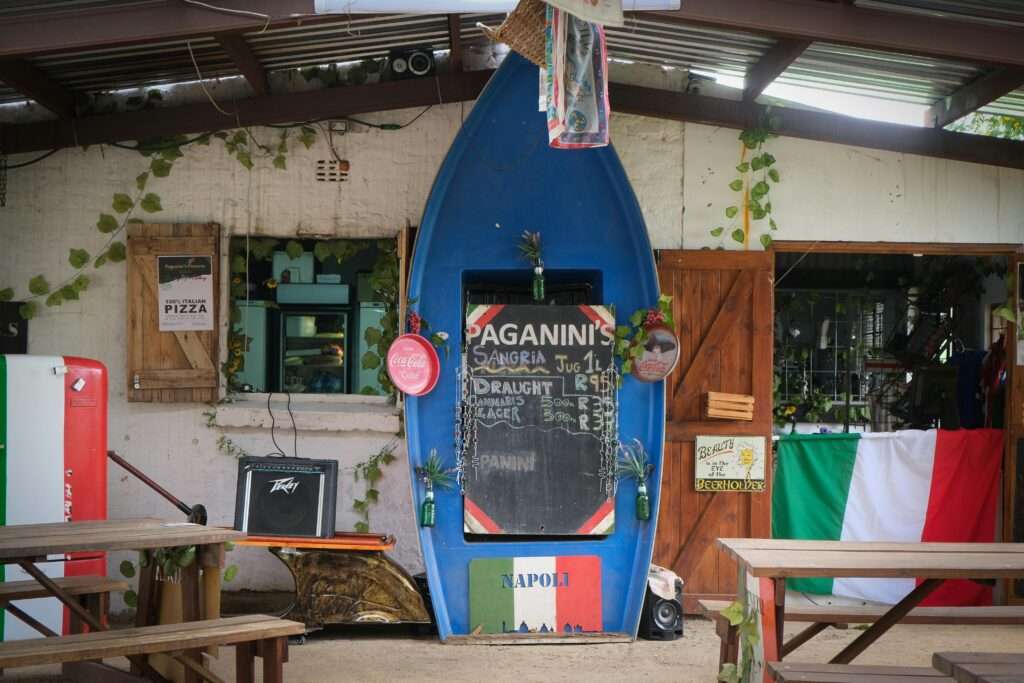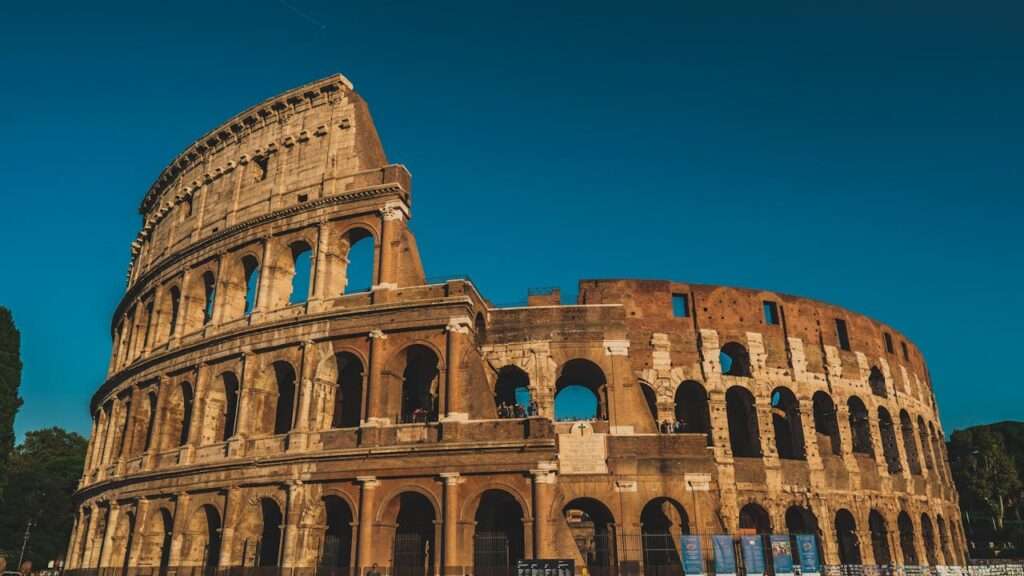Italy, the land of pizza, pasta, and gelato, might seem like a place where you need deep pockets to enjoy the legendary cuisine. But here’s a delicious secret: some of the most authentic Italian food experiences are also the most affordable! In 2025, eating well on a budget in Italy is not only possible but can lead you to discoveries that many tourists miss.
Whether you’re a student backpacking through Europe, a family watching expenses, or simply a traveler wanting to stretch your euro, Italian food culture offers numerous ways to feast without financial guilt.
Did you know that Italians themselves often prefer simple, inexpensive meals? It’s true! The stereotype of elaborate, expensive Italian dining is largely a tourist invention. Many of Italy’s most beloved dishes were born from “cucina povera” (poor kitchen) traditions, where humble ingredients are transformed into extraordinary meals through technique and passion rather than expensive components.
Let’s dive into how you can eat like a local without emptying your wallet!
Understanding Italian Food Culture
Italy’s food culture is built on principles that naturally align with budget-friendly eating when you understand them properly.
Regional Simplicity Is King
In authentic Italian cuisine, quality always trumps quantity. A perfect plate of pasta with just three high-quality ingredients will outshine an overstuffed, complicated dish every time. This philosophy extends throughout Italian food culture and benefits budget travelers tremendously.
Many Italians prefer simple meals at home and save restaurant visits for special occasions. When they do eat out, they’re looking for quality ingredients prepared correctly, not elaborate presentation or fusion experiments.
North vs. South Price Differences
A significant factor in your food budget will be your location within Italy. Generally speaking:
- Northern Italy (Milan, Venice, Turin) tends to be more expensive overall
- Central Italy (Rome, Florence) has mid-range prices with high tourist markups in certain areas
- Southern Italy (Naples, Sicily, Puglia) offers the most budget-friendly food options
For example, a pizza margherita might cost €12 in a decent restaurant in Milan, €9 in Rome, but just €4-5 in Naples (its birthplace!). These regional differences extend to everything from coffee to market prices.
Seasonality Impacts Everything
Italians are deeply connected to seasonal eating. Not only does this result in better-tasting food, but it also means better prices. Look for “prodotti di stagione” (seasonal products) which will be prominently displayed at markets and featured on restaurant menus.
Shopping and eating seasonally can reduce your food costs by 30-40% compared to buying out-of-season imported produce. In 2025, many Italian cities have apps that alert you to what’s currently in season and where to find the best prices.
Street Food Options Across Italy
Some of Italy’s most delicious offerings come in the form of street food, and these portable delights are perfect for budget travelers.
Regional Street Food Specialties (Under €5)
Every region of Italy has its street food specialties, almost all priced very reasonably:
- Rome: Supplì (fried rice balls with mozzarella centers, €2-3 each), porchetta sandwiches (€4-5)
- Naples: Pizza a portafoglio (folded pizza, €2-3), frittatina (fried pasta cakes, €2)
- Sicily: Arancini (larger stuffed rice balls, €2-4), panelle (chickpea fritters, €2)
- Florence: Lampredotto sandwiches (slow-cooked tripe, €4-5), schiacciata (stuffed flatbread, €3-4)
- Milan: Panzerotti (fried mini calzones, €3), mondeghili (fried meatballs, €1 each)
- Bologna: Tigelle with cured meats (small round breads, €4-5 with fillings)
Finding Authentic Street Food
To find the best street food, follow these simple rules:
- Look for lines of locals (especially workers on lunch breaks)
- Seek places that specialize in just one or two items rather than offering everything
- Avoid spots with picture menus aimed at tourists
- Use apps like “EatItaly” or “StreetFood Italia” that have been updated for 2025 with user reviews
Markets and Food Halls
Italy’s markets aren’t just for grocery shopping—they’re dining destinations. Many markets have food stalls where you can eat freshly prepared items at communal tables:
- Mercato Centrale in Florence and Rome
- Mercato di Mezzo in Bologna
- Mercato di Sant’Ambrogio in Florence
- Mercato di Testaccio in Rome
- Mercato di Ballarò in Palermo
Market meals typically cost €5-8 for a complete lunch with much higher quality than tourist restaurants charging triple the price.
Dining at Local Trattorias and Osterias
For sit-down meals, understanding the different types of Italian eating establishments helps tremendously with budgeting.
Understanding Restaurant Types
From least to most expensive:
- Tavola Calda: Cafeteria-style with pre-made dishes (€8-12 for a meal)
- Osteria: Originally wine-focused with simple food, now slightly more elaborate but still casual (€12-20)
- Trattoria: Family-style restaurant with home cooking (€15-25)
- Ristorante: More formal dining experience (€25-50+)
For budget travelers, osterias and trattorias offer the best value, especially those with a “menu fisso” (fixed price menu) or “menu del giorno” (menu of the day).
Avoiding Tourist Traps
Look for these warning signs of overpriced tourist establishments:
- Menu translated into multiple languages displayed outside
- Staff standing outside trying to entice customers in
- Photos of food on the menu
- Located directly on main squares or extremely close to major attractions
- Empty while nearby places are full of Italians
Instead, walk just 2-3 streets away from major attractions. The quality typically goes up while prices drop by 30-50%.
Understanding Menu Pricing
Be aware of these often-misunderstood menu elements:
- Coperto: Service charge (€1-3 per person) that is legal and normal
- Servizio: Additional service charge (usually 10-15%) that should be clearly indicated
- Pane e coperto: Bread and cover charge combined
- Menu turistico: Often a low-quality fixed price menu for tourists
The “primo piatto” (first course) of pasta or risotto is usually the most filling and cost-effective item. Many Italians don’t order every course at every meal—it’s perfectly acceptable to order just a primo or secondo.
Self-Catering: Eating Cheap in Italy
One of the best ways to eat cheaply in Italy is to prepare some of your own meals, even if it’s just breakfast or the occasional dinner.
Navigating Italian Food Shopping Options
In order of typically increasing price:
- Discount supermarkets: Eurospin, Lidl, Penny Market
- Regular supermarkets: Conad, Coop, Carrefour, Esselunga
- Local markets: Mercato rionale (neighborhood markets)
- Specialty food shops: Salumeria (deli), Panificio (bakery), Fruttivendolo (fruit vendor)
For the most authentic and budget-friendly experience, shop where Italians shop. Most neighborhoods have a mercato rionale that operates certain mornings where you’ll find the freshest produce at the best prices.
Market Shopping Tips
- Bring your own bags (you’ll be charged for plastic bags)
- For produce at markets, don’t touch the food—point and the vendor will select for you
- At supermarkets, you must weigh and price-tag your own produce before checkout
- Look for “offerta speciale” signs indicating special offers
- Shop late in the day (especially at markets) for potential discounts
Budget Italian Picnic Guide
Create a perfect Italian picnic for two people for under €10:
- Fresh bread from a local bakery (€1-2)
- 100g of local cheese (€2-3)
- 100g of salumi like prosciutto or mortadella (€2-3)
- Seasonal fruit (€1-2)
- Small bottle of local wine (€3-5)
Enjoy your picnic in a park, piazza, or scenic spot—just be aware that some historic centers have restrictions on where you can eat in public.
Budget Accommodation with Kitchen Access
Where you stay significantly impacts your food budget in Italy.
Accommodation Options with Kitchens
- Hostels: Most have shared kitchens (from €20/night)
- Airbnb/apartment rentals: Full kitchens, best for stays of 3+ nights (from €50/night)
- Agriturismi: Farm stays often with kitchens or meal options (from €60/night)
- Convents and monasteries: Simple rooms, some with kitchen access (from €30/night)
Even with just a microwave and refrigerator, you can significantly reduce your food expenses by preparing breakfast and occasional dinners.
Simple Italian Recipes Anyone Can Make
Try these easy, authentic dishes that require minimal equipment:
- Pasta aglio e olio: Pasta with garlic, olive oil, and pepper flakes
- Caprese salad: Tomatoes, mozzarella, basil, olive oil
- Panini: Italian sandwiches with bread, cheese, and salumi
- Bruschetta: Toasted bread with toppings like tomatoes or beans
Essential Grocery Items
Stock your rental kitchen with these budget basics:
- Good olive oil (€5-8 for a small bottle that will last your whole trip)
- Local cheese (parmigiano for grating, pecorino, or regional specialties)
- Fresh pasta (€1-2 per portion)
- Canned tomatoes or ready-made sugo (sauce)
- Fresh bread from a local bakery
Aperitivo Culture: The Budget Diner’s Best Friend
Aperitivo—Italy’s pre-dinner drinking tradition—is perhaps the best-kept budget secret in Italian dining.
What is Aperitivo?
Originally meant as a light pre-dinner ritual to stimulate appetite, aperitivo has evolved in many cities to include substantial food buffets with the purchase of a drink (typically €8-12). In some establishments, this can easily substitute for dinner.
Best Cities for Aperitivo Value
- Milan: The undisputed aperitivo capital, with the most generous buffets
- Turin: Close second to Milan with an elegant aperitivo scene
- Rome: Becoming more popular, especially in Trastevere and Pigneto neighborhoods
- Florence: Concentrated around Santo Spirito and San Niccolò areas
- Bologna: Student-friendly venues with hearty offerings
In 2025, many venues have adapted their aperitivo offerings with QR-code menus allowing you to order small plates delivered to your table rather than self-service buffets.
Getting the Most from Aperitivo
- Timing is everything: Most aperitivo runs from 6-9pm
- One drink purchase typically gives you access to the food buffet
- Negroni, Aperol Spritz, or Campari Soda are traditional aperitivo drinks
- Non-alcoholic options are always available
- Some places refresh the buffet continuously; others set it out once
The best strategy is to arrive early (around 6:30pm) when the food is freshest and seating is still available.
Money-Saving Tips and Etiquette
Water and Wine Strategies
- Ask for “acqua del rubinetto” (tap water) which is perfectly safe in Italy but not commonly served
- Look for “casa” or “sfuso” wine (house wine sold by the carafe), which is usually excellent and costs €5-10 per half-liter
- Use the public water fountains called “nasoni” (big noses) in Rome or “fontanelle” elsewhere to refill your water bottle
Coffee Culture Savings
- Standing vs. sitting: In Italian bars, coffee consumed standing at the counter costs significantly less (€1-1.50) than sitting at a table (€3-5)
- Avoid tourist-area cafes where an espresso might cost €4-5 instead of the standard €1-1.50
- Morning coffee and pastry standing at a local bar is the most budget-friendly breakfast (€2-3 total)
When and How to Tip
Tipping in Italy is much more modest than in countries like the United States:
- For restaurants, rounding up the bill or leaving €1-2 per person is appreciated but not required
- No tipping is expected for counter service, takeaway, or casual establishments
- If a “servizio” charge appears on your bill, no additional tip is necessary
Digital Savings
In 2025, several apps help with budget eating in Italy:
- TheFork (formerly ForkEat): Reservations with special discounts of 20-50%
- TooGoodToGo: Offers end-of-day discounted food from bakeries, markets, and restaurants
- Vivino: Helps identify good value local wines
- Satispay: Payment app with restaurant discounts
Conclusion
Eating cheaply in Italy doesn’t mean missing out on authentic culinary experiences—quite the opposite! By embracing local food customs, seeking out neighborhood establishments, and shopping where Italians shop, you’ll not only save money but also enjoy more genuine encounters with Italian food culture.
Whether you’re savoring a €3 slice of pizza in Rome, enjoying a market-fresh picnic alongside a Venetian canal, or filling up at a generous aperitivo in Milan, budget dining in Italy offers delicious rewards for the savvy traveler.
Remember that Italians themselves value quality ingredients prepared simply over elaborate, expensive meals. By adopting this philosophy, you’ll eat better while spending less. The most memorable Italian meals often come from humble establishments where passion for food transcends price.
So grab your appetite and your sense of adventure—Italy’s affordable culinary treasures await!



